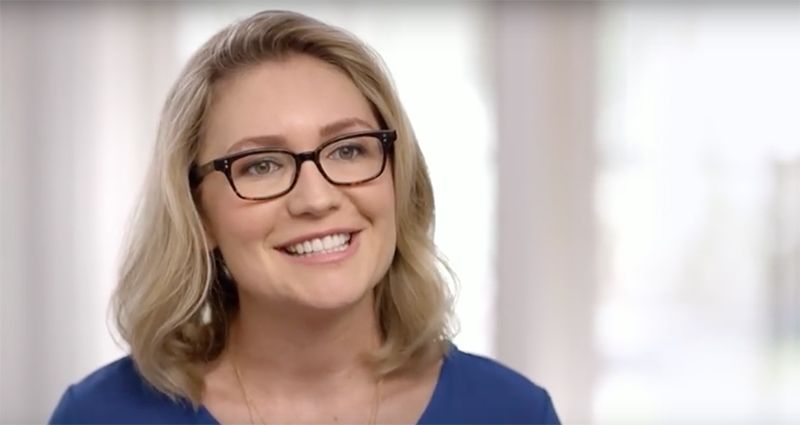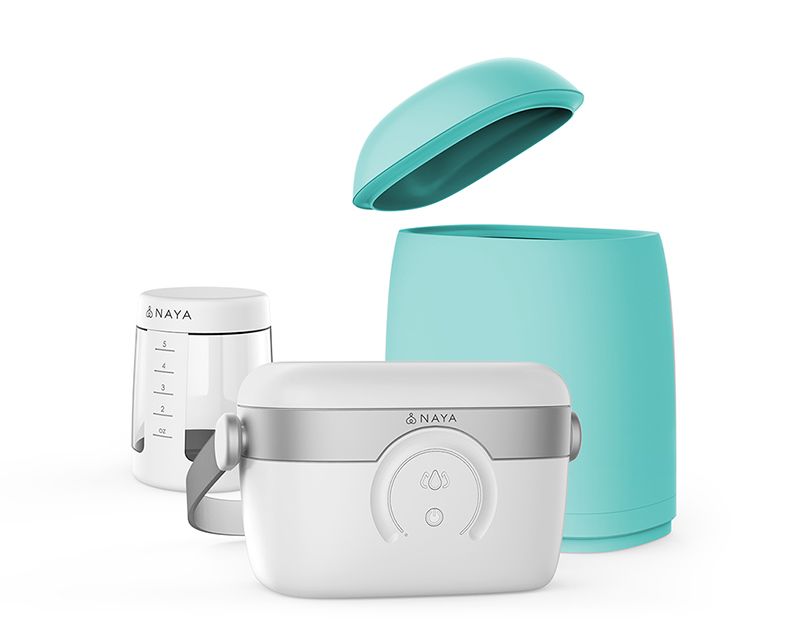Could It Be? A Quiet, Comfortable and Bluetooth-Connected Breast Pump
From breast pumps to bottles, the Silicon Valley startup Naya Health is making smarter products for parents and infants
/https://tf-cmsv2-smithsonianmag-media.s3.amazonaws.com/filer/b1/e5/b1e5d186-7685-46cd-ade6-86a5a4d6e710/naya-smart-pump-1.jpg)
Janica and Jeff Alvarez think at least one aspect of new parenthood should be seamless and simple: pumping breast milk.
Jeff, a medical device engineer, made his very first breast pump from a surgical glove, a washer, duct tape and a piece of a catheter in the couple’s garage. His wife, Janica, a pharmaceutical researcher who was breastfeeding one of their sons but fed up with traditional electric pumps, was his beta tester.
The first breast pumps were medical devices patented in the mid-1800s, used in hospitals to feed infants too small to nurse. It was the Medela company that introduced the first consumer pump in 1991. Despite demand for the product, even a hackathon at MIT, consumer-grade electric pumps—known for being clunky, noisy and uncomfortable—haven’t changed much in the past 25 years.
Twenty-three patents filed and seven iterations later, the Alvarez’s Smart Pump is a welcome departure from the electric pumps that have dominated the market since the early 1990s. What the couple figured out is that a water-based system makes for a quieter pump that better simulates the experience of nursing. Not to mention, with fewer parts, the sleek device is easier for busy new parents to clean.
Their “smart” breast pump, retailing for $599, is the first in a suite of infant feeding and mothers’ health and wellness products from the Alvarez’s company, Naya Health. Naya begins shipping pump preorders in July. This fall, the company will introduce a bottle that pairs with the pump (or any market-leading pump) and helps new moms track both how much they pump and how much an infant drains from the bottle during each feeding. This can alleviate supply problems, such as over-pumping or having too little milk on hand at any given time.
Naya Health co-founder and CEO Janica Alvarez shares her story.

How did Naya Health start?
I’m a mom to three little boys, all of whom I nursed. I used a breast pump when I transitioned back to work, and I became very frustrated with the experience of pumping. I relied on [an electric pump] so much when I went back to work, and there’s no alternative.
For me, pumping was such a horrifying experience. I was constantly reminded I wasn’t nursing my own kids, and it hurt like hell. I told my husband, who is a medical device engineer, ‘I can’t keep using this thing. It’s loud, and it’s uncomfortable.’
Jeff said, ‘Let me see if I can improve it.’ He took the pump out to the garage and tinkered with it. He was really underwhelmed by the cheap parts he saw once he opened the pump. It looked like it rolled out of the mid-19th century. He made some improvements at the margins, but air-based systems—all the leading pumps on the market are pneumatic [operated by air]—really limit the improvements you can make. So he decided that trying to make a hydraulic-based system [powered by fluids] would be the best way to solve the pain points associated with a traditional pump design.
How does a water-based system differ from an air-based one?
An air-based system requires a lot of parts to assemble and create suction at the breast tissue. It’s hard to push and pull air, and there’s a lot of energy lost through that distance.
The efficiency and force of hydraulics, and our use of a medical-grade silicone flange that envelops breast, feels more like nursing a baby versus nursing a machine. We call the water-based technology that creates so much comfort at the breast “hydrocomfort.” We still have a mechanical system in our pump, but it is based on moving water.
Another beauty of replacing air with water is that the pump has flexible, pliable parts—and fewer of them to clean. It’s not four to six per breast per pumping session but only two pieces per breast. That saves time.

Tell me about the app.
The Naya Health Tracker gives you a quick overview of 24 hours worth of activity, such as how much you nursed, whether and how much formula or breast milk you fed your baby, when and how much you hydrated and how many hours you slept.
The app collects the data through a low-energy Bluetooth connection and tracks user behavior to help moms understand their own patterns and how that impacts milk production over time. The app is also there to give instant reassurance to moms about the infant feeding experience, whether it’s breast milk or formula. We don’t take sides on that issue. We support a mom’s position.
Did you run into any problems you didn’t anticipate?
Nothing about building a company is seamless—especially when you’re making hardware that will be evaluated by the Food and Drug Administration. One challenge for us in particular was making the flange [or breast shield], which goes against the breast. The technology isn’t an issue, but we needed to make sure we could accommodate multiple types of anatomy. Breasts change throughout the day, especially during lactation, and we wondered, what could meet ever-fluctuating anatomy? It’s such an intimate part of the product and has to work for so many women at so many stages of lactation. That piece—figuring out how to best use flexible silicone—took a lot of time to perfect.
What’s next for Naya Health?
After our breast pump starts shipping, we’ll also be introducing the Naya Health Smart Bottle. It automatically captures how much milk a woman produces and then how much her baby feeds out of the bottle. We separated the bottle from the pump to make the bottle available to a broader audience. The bottle can work with our system but also other market-leading breast pumps.
Women want an automated way to collect data that our pediatricians request—for example, how much you pump in a 24-hour period—but that we’re too sleep deprived to track or think about.
From day one, we knew we wanted to make a smarter overall experience for new mothers and scale in adjacent markets related to infant nutrition and health and wellness for moms. We’re starting here, but we plan to get big, and we have the team and IT to grow. There are so many companies in the baby space but thinking of moms often falls through the cracks. We want to take care of moms so they can take care of their babies and families.
We’ve had a lot of success as a husband-and-wife team. There are lots of naysayers who say you shouldn’t work with family, but it took Jeff, me and our whole team to create this social impact initiative. The breast pump market leaders aren’t listening to consumers or reinvesting in innovation to make pumps better. But we are—our whole team is. And while we’re for-profit, we are listening to what women need and have an existing use case on which we’re building a solution. It takes a village to raise a company.
/https://tf-cmsv2-smithsonianmag-media.s3.amazonaws.com/accounts/headshot/brittany_headshot_crop.jpg)
/https://tf-cmsv2-smithsonianmag-media.s3.amazonaws.com/accounts/headshot/brittany_headshot_crop.jpg)